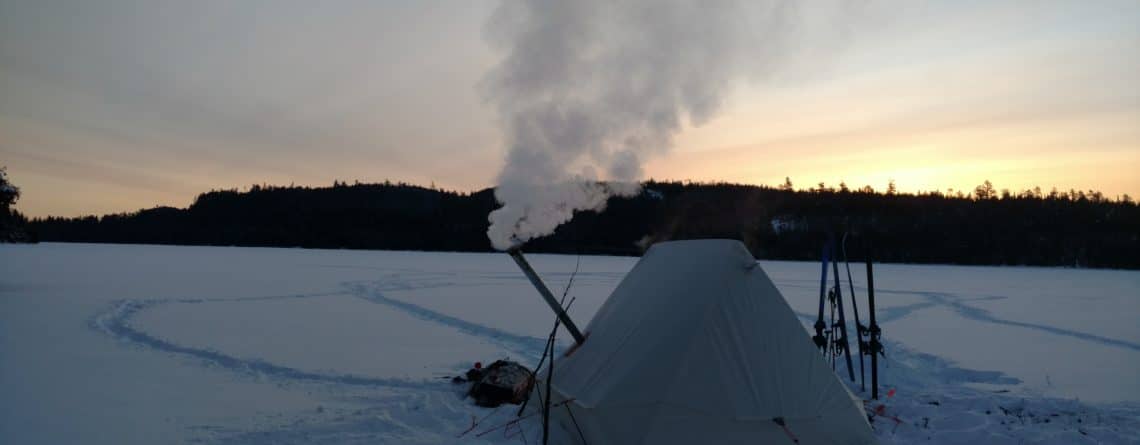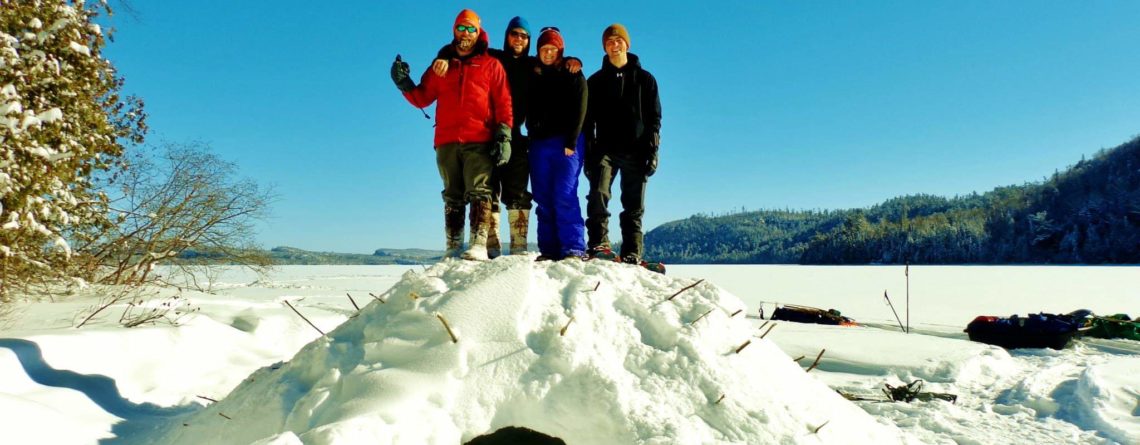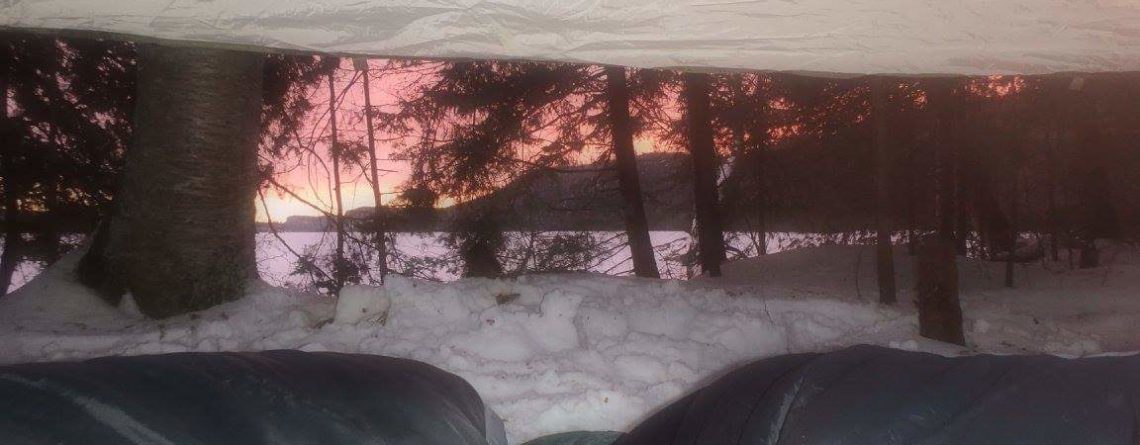Cold vs. Hot Camping

When talking with folks about winter camping one common question may be “Are you cold camping or hot camping. This may seem like a silly question if you’re not sure what the difference is. It is winter in Minnesota of course its cold!
In the context of this question hot camping refers to bringing a heat source, most commonly a canvas or synthetic tents with a wood burning stove and stove pipe going through the tents. Cold camping refers to not bringing a heat source. Cold campers may opt to sleep in various shelters including tents, tarps or shelters made from snow. So what are the advantages and disadvantages of each?
The advantage of hot tenting is clear. It is by far the warmest and most comfortable way to camp in the winter. It provides an extra margin of safety and allows for gear to be easily dried. With proper lighting like LED lanterns hot tents provide a warm place to relax with friends after a long day in the wilderness. With a well stocked stove and a good coal base you’ll be sitting around in your base layers on the coldest of Minnesota nights. Due to the size and light weight nature of these stoves they require regular attention to continue burning and producing heat. For this reason most people will let the stove go out when they fall asleep, so always bring the proper clothing and sleeping bags to keep warm without additional heat.
The disadvantages to hot tents are their weight, cost and the amount of work that they involve. Hot tents are heavy. They can easily weight 50 pounds or more for a larger tent and stove combo for a big group. They also require a lot of work in terms of finding, cutting and chopping fire wood to the appropriate size. Finally they present an additional expense that may hinder some folks. If you just want to get into winter camping renting this big ticket item may be a good way to start. For most groups these cons are worth it, you just must factor in the additional weight and time into your travel schedule. Luckily far fewer people are out in the wilderness in the winter so it is not necessary to travel very far to find peace and solitude.
As I stated earlier cold campers have several options for where to sleep. Many newbie’s opt to bring their summer tents, known as three season tents. Three season tents offer some shelter from the wind and provide a place to get out of the snow, but have many downfalls. They offers minimal warmth and dealing with frozen tent poles in the cold can be a pain. One step better is a four season tent. These tents are designed with thicker fabric, heavier poles and less screen. These tents will trap more body heat and add a little warmth. They typically are heavier than three season tents but much lighter than hot tents. One down side of both of these tents is that they do not breathe or absorb moisture like a canvas tent. This causes them to be damp inside in the morning or covered with frost on the ceiling as a result of all the moisture produced by your body as you sleep.
Another option is to tarp camp. Typically this involves on cheap poly tarp that is used as a ground cloth and a nice rip stop nylon tarp hung in the trees. The ground tarp serves multiple purposes as it can be used to wrap your gear on your sled like a burrito to keep in nice and snug. The top tarp is typically only a pound or two making this the lighter than any tent set up. In order to get wind protection you will need to find a spot in a thick sheltered area, often being surrounded by young conifer trees is best. You can also pile snow around the edges if you want for a little more protection. This shelter seems to most to be the craziest way to spend the night, but with a good sleep system it can be a good way to go. It is a great set up for those looking to travel a bit further and lighten the load. This system will test and build your winter wilderness skills and once you master it you’ll have the confidence to tackle any winter trip.
The last form of shelter I’ll touch on is snow forts; usually in Minnesota this means quinzees. Quinzees look similar to igloos, but they are built in a different way. To built one you first start by making a big pile of snow and walking on it with snowshoes or using a shovel to compact it. Next you place several sticks about one foot into the structure in a grid pattern. Once you begin digging out the shelter these will let you know when you are nearing the exterior wall and signal you to dig with caution. With everything set to this point you will need to leave the snow set up for at least two hours. After it has set up you begin digging until you have created a hollowed out snow cave. Quinzees take a lot of work to build and usually involve getting pretty wet, but once done they are a very warm structure and a pretty neat experience to spend the night in. Candles are often used in quinzee for light and a small amount of warmth.
No matter how you spend the night winter camping is an amazing way to see the Boundary Waters in the quietest of seasons. If you have always wanted to try winter camping or change the way you winter camp we can help.

A Quinzee built for four can support a lot of wight once set up for a few day

It’s hard to beat a sunrise while sleeping under a tarp

